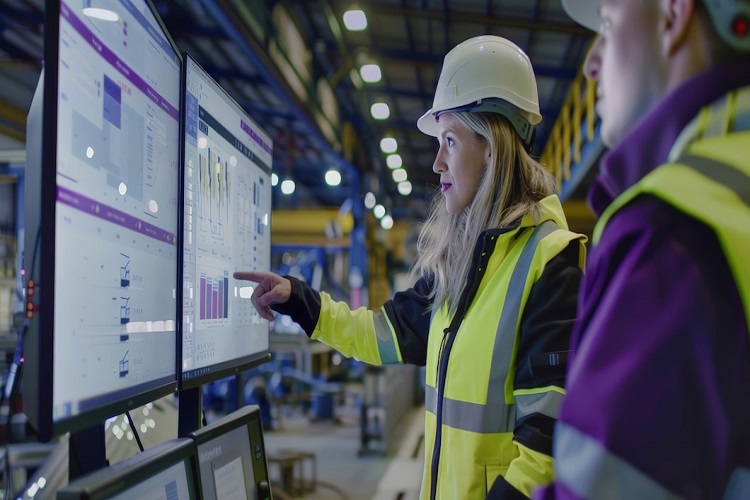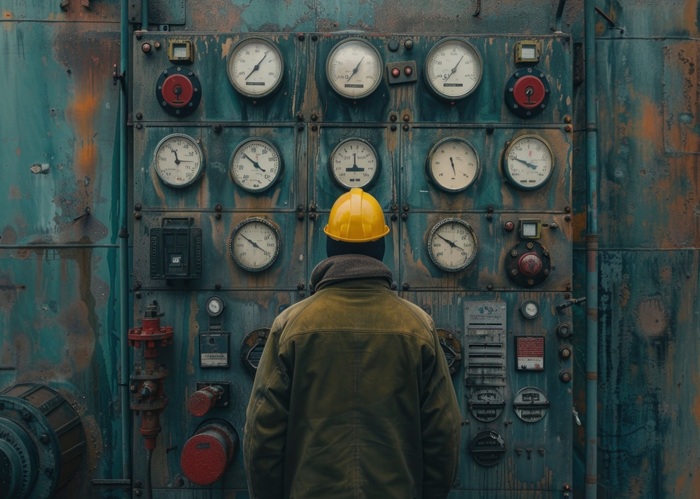Availability is a crucial aspect of predictive maintenance in an industrial plant. With availability, a plant can avoid unexpected interruptions, unscheduled shutdowns, and operational inefficiencies that lead to significant financial losses.
To overcome these challenges, managers need to understand and master availability calculation. This skill enables them to make precise resource allocation, maintenance planning, and process optimization decisions.
If you’re unsure how to calculate availability, this article explains everything!
Main Challenges in Maintaining Plant Availability
The main challenges in keeping an industrial plant available involve properly maintaining machinery to ensure safe operations.
Availability is also linked to the efficient performance of the purchasing department. With spare parts ready for necessary replacement, equipment downtime is minimized.
Consequences of a Plant Lacking Machine Availability
On the other hand, without adequate machine availability, companies are likely to suffer from operational failures. This issue may also lead to activity interruptions and hurt the productivity of industrial plants.
When the availability level is low, companies may also incur extra costs. Therefore, calculating and aiming to improve availability rates helps enhance the business’s financial health.
What is Availability in Maintenance?
Availability is an indicator used to assess the time an asset, such as an industrial machine, can be used. The metric shows the likelihood that equipment will be active due to preventive maintenance activities over a specific period.
For instance, if a machine operates 12 hours a day, takes an hour to start, and has an hour of maintenance, its final availability is 10 hours daily. However, this may lead to production line delays and negatively impact organizational results.
Types of Availability
The most common types of availability in maintenance are physical and inherent. See the differences between them below.
Physical
Physical availability connects two factors: 1) when an asset or equipment is in working condition for planned operations and 2) the total hours/calendar. This includes the mechanical, electronic, and electrical conditions of machines.
Inherent
Inherent availability only considers the equipment’s downtime due to corrective maintenance. It does not include preventive or predictive maintenance downtime or stoppages due to delays in raw material delivery.
Inherent availability calculations aim to evaluate the maintenance team’s agility and efficiency. This index also helps measure the team’s training and specialization levels.
Availability vs. Reliability
Availability and reliability are different concepts. The first refers to the probability of equipment achieving expected performance, distinct from merely being available.
Reliability ensures that machines operate within quality standards and deliver the desired results—consequently, the lower an asset’s reliability, the lower its availability.
How to Calculate Availability?
Availability calculation should follow specific formulas depending on the type of availability being measured. Learn more!
Physical
To measure physical availability, use the formula: H1 – H2 x 100% / H1. H1 refers to total hours/calendar (24 hours x number of days in the month).
H2 refers to the total downtime for maintenance, whether corrective or preventive.
Inherent
Inherent availability is determined by the formula MTBF / (MTBF + MTTR) x 100. MTBF (Mean Time Between Failure) represents the average time between failures, and MTTR (Mean Time to Repair) is the average repair time.
Other Essential Indicators for Industrial Plants
After understanding the importance of availability calculation, here are other key indicators to monitor in industrial plants: MTTR, MTBF, and CMP.
Mean Time to Repair (MTTR)
MTTR is linked to a technician’s average time to repair equipment so it resumes full functionality. The purpose is to measure equipment maintainability.
Mean Time Between Failures (MTBF)
Also used in inherent availability calculations, the Mean Time Between Failures measures the time between maintenance events. This indicator aims to gauge an asset’s reliability level.
Maintenance Cost per Piece Produced (CMP)
CMP measures costs related to labor, outsourcing, materials, machine wear, and other expenses. Its goal is to determine if spending aligns with expected parameters to avoid losses.
Our infographic, available for download here, provides more details about seven predictive maintenance indicators to track in industrial plants.
Count on Semeq to Improve Asset Availability
Semeq is a company capable of interpreting and translating health data from your equipment. With our predictive maintenance services, you maximize your assets’ potential.
We offer a wide range of predictive maintenance monitoring systems with different types of sensors. Additionally, you can rely on specialized technical support and labor to enhance your production line’s performance.
Today, Semeq monitors 500 factories worldwide and operates in 45 countries. Our team comprises over 300 employees dedicated to increasing your industrial efficiency. Contact us today!
Read more content like this on our blog:
Thermography in predictive maintenance: what it is and how to make it an ally




